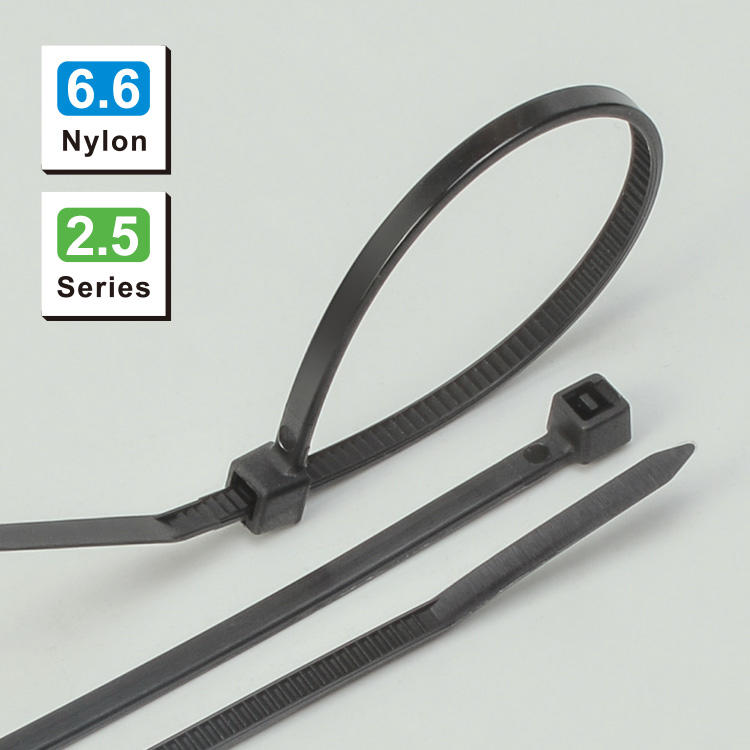Who Invented Zip Ties?
In world of modern engineering and everyday organization, zip ties, also known as cable ties, have become an indispensable tool. These simple yet highly effective devices are used to secure, bundle, and organize a wide variety of items, from electrical cables and hoses to gardening materials and even in some creative DIY projects. Among the different types of zip ties, nylon cable ties are the most commonly used. But have you ever wondered who was the brilliant mind behind the invention of zip ties? The story of their invention is as fascinating as the utility these little fasteners provide.
The Birth of Zip Ties: A Solution in Need
The mid - 20th century was a time of rapid technological advancement, especially in the automotive and aerospace industries. With the increasing complexity of electrical systems and the need to manage a growing number of cables and wires, there was a pressing demand for a reliable, easy - to - use fastening solution. Traditional methods, such as tapes, ropes, or metal ties, often proved to be inefficient, unreliable, or time - consuming.
It was in this context that Thomas & Betts employee Maurus C. Logan came up with an innovative idea. In 1958, Logan, an engineer at the company, was looking for a better way to organize and secure electrical cables in automotive and industrial applications. He envisioned a simple, one - piece fastening device that could be quickly and easily applied, providing a strong and secure hold. After extensive research and experimentation, Logan developed the first prototype of the zip tie.
The Invention and Its Initial Design
Logan's original zip tie design was a revolutionary concept. It consisted of a narrow, flexible strip of material with a locking mechanism at one end. The strip had a series of ridges or teeth along its length, which interlocked with the locking mechanism to create a secure hold. Once the tie was tightened around the cables or objects, it could not be loosened, ensuring a permanent and reliable fastening.
Initially, these early zip ties were made from various materials, but nylon soon emerged as the material of choice. Nylon, a synthetic thermoplastic polymer, offered several advantages that made it ideal for zip tie production. It was strong, durable, resistant to abrasion, and had excellent chemical resistance. These properties made nylon cable ties suitable for a wide range of applications, from indoor electrical work to harsh outdoor environments.
The Rise of Nylon Cable Ties
The use of nylon in zip tie production was a game - changer. Nylon cable ties quickly gained popularity due to their superior performance and versatility. Their strength allowed them to securely hold heavy bundles of cables, while their flexibility made them easy to wrap around objects of various shapes and sizes.
In the automotive industry, nylon cable ties were used to organize and secure the complex web of electrical wires and hoses under the hood. This not only improved the reliability of the electrical systems but also made maintenance and repair work more efficient. In the aerospace industry, where safety and reliability are of utmost importance, nylon cable ties were employed to manage cables and components in aircraft, ensuring that everything remained in place during flight.
Over time, the design of nylon cable ties has evolved to meet different needs. Today, there are various types of nylon cable ties available, including standard ties, releasable ties, and heavy - duty ties. Standard nylon cable ties are the most commonly used and are suitable for general - purpose applications. Releasable ties, on the other hand, have a special locking mechanism that allows them to be opened and reused, providing more flexibility in certain situations. Heavy - duty nylon cable ties are designed to withstand higher tensile forces and are used for securing large or heavy objects.

The Impact and Spread of Zip Ties
Since their invention, zip ties have spread far beyond their original intended use in the automotive and aerospace industries. They have become a staple in countless other fields, including electronics, construction, telecommunications, and even in household and hobbyist applications.
In the electronics industry, nylon cable ties are used to keep computer cables organized, preventing tangling and making it easier to manage and upgrade computer systems. In construction, they are employed to secure pipes, wires, and other building materials. In the telecommunications sector, they help in organizing and securing cables in data centers and communication networks.
At home, people use nylon cable ties for a wide range of tasks, from organizing cables behind the TV or computer to securing items during storage or transportation. DIY enthusiasts often incorporate zip ties into their projects, using them in creative ways to fasten and assemble various components.
Recognition and Legacy of the Invention
Although Maurus C. Logan's invention of the zip tie was a significant contribution to the world of engineering and organization, his name may not be as widely known as some other inventors. However, the impact of his invention is undeniable. Zip ties, especially nylon cable ties, have become an essential part of modern life, making our daily tasks easier and more efficient.
The invention of zip ties also paved the way for the development of other similar fastening devices. Today, there are numerous variations and improvements on the original zip tie design, all inspired by Logan's initial concept.
In conclusion, the story of who invented zip ties leads us to Maurus C. Logan, an engineer whose innovative thinking and determination solved a common problem and gave the world a simple yet highly effective tool. Nylon cable ties, in particular, have played a crucial role in the success and widespread adoption of zip ties, thanks to their excellent properties and versatility. As we continue to rely on zip ties in various aspects of our lives, it's important to remember the inventor behind this remarkable invention and the impact it has had on our world.






